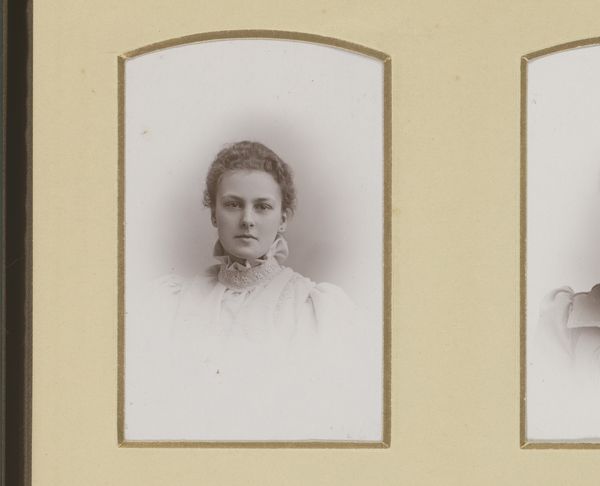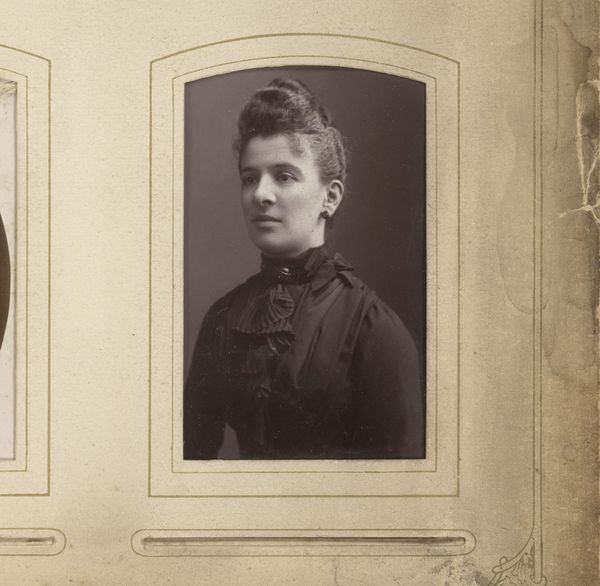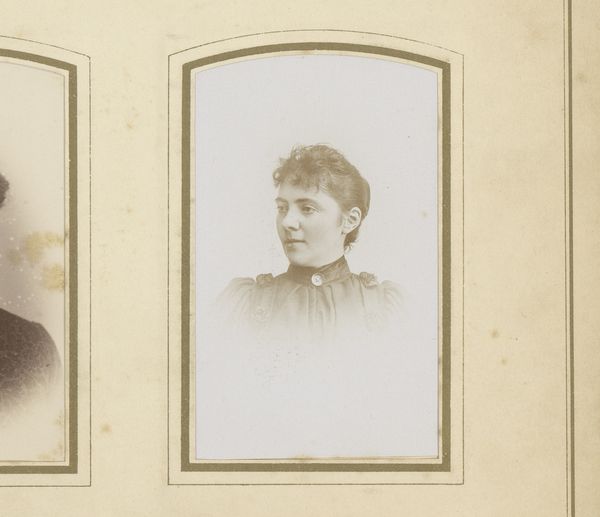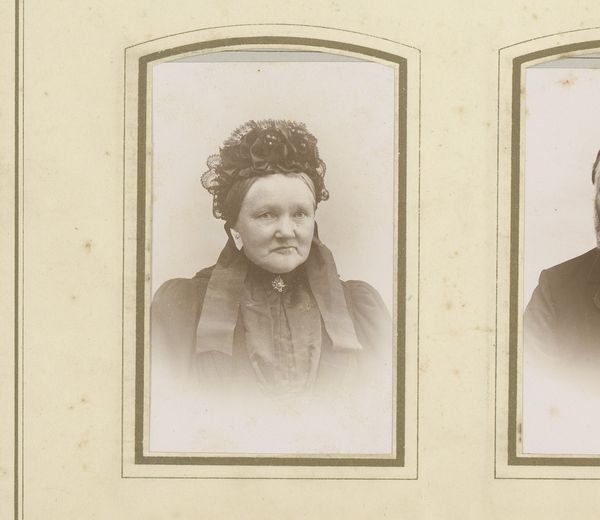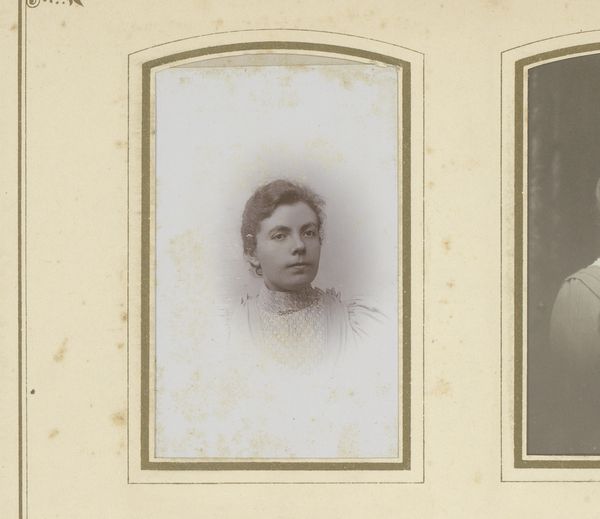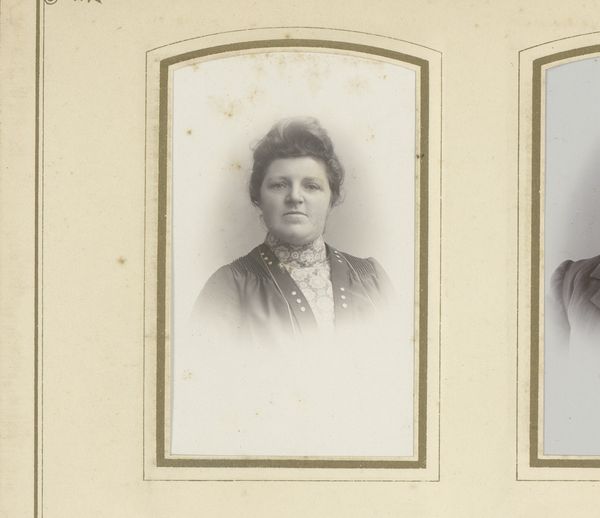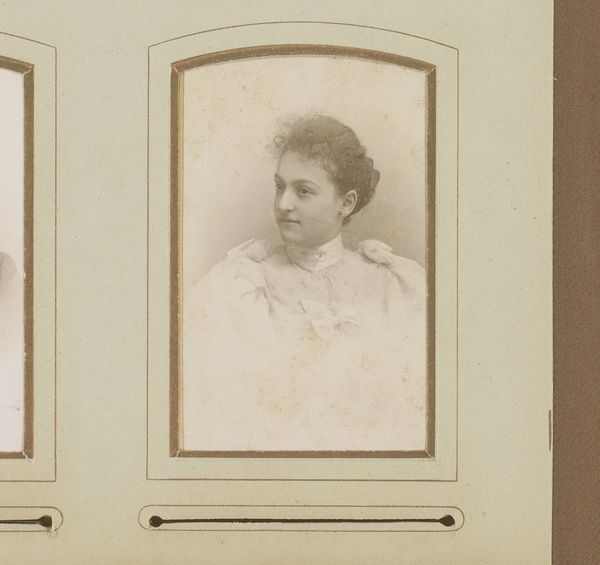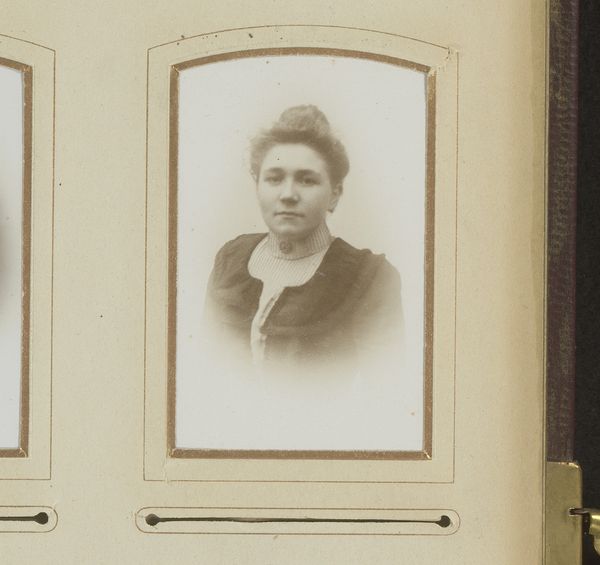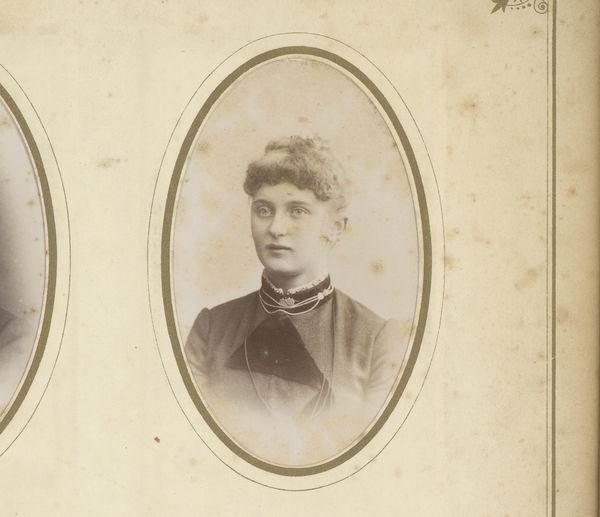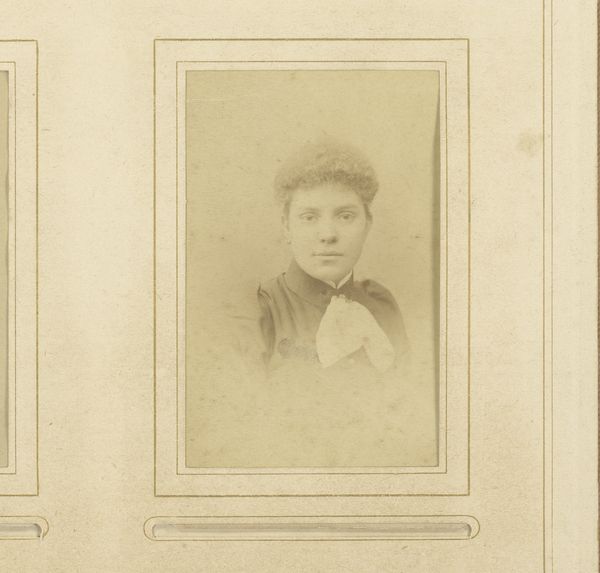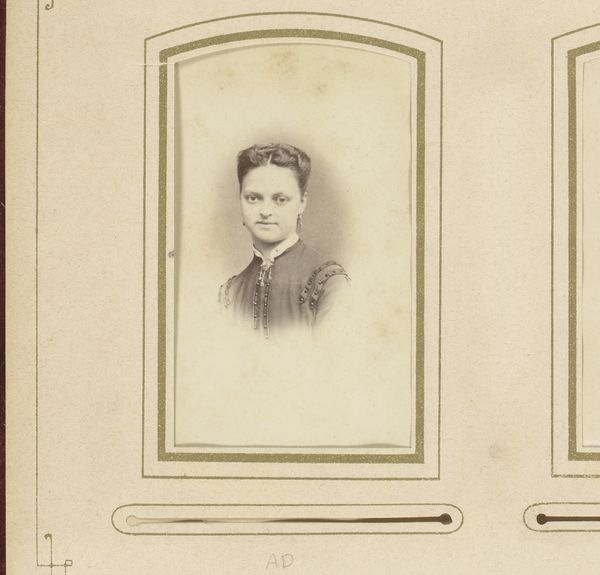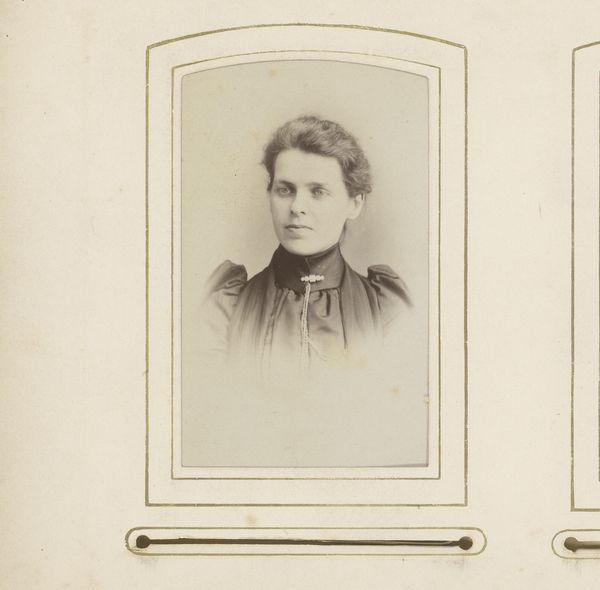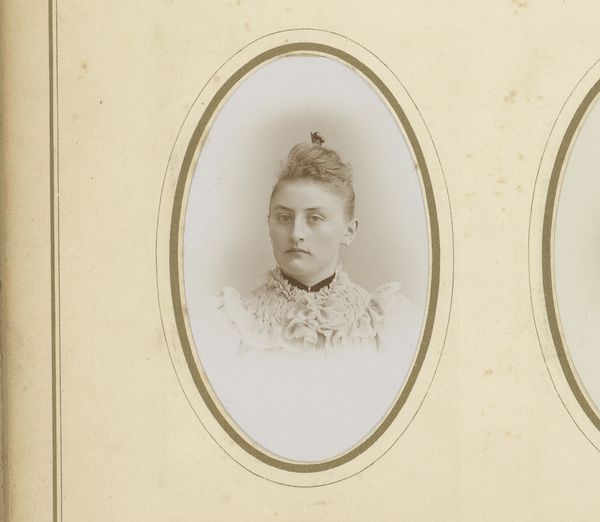
photography
#
portrait
#
pictorialism
#
photography
#
realism
Dimensions: height 83 mm, width 53 mm
Copyright: Rijks Museum: Open Domain
Editor: So, this is "Portret van een jonge vrouw," a photograph by Machiel Hendricus Laddé, probably taken between 1892 and 1906. The sepia tone gives it a somber mood. I'm struck by how directly she's looking at the camera, especially given the constraints on women during that period. What’s your take? Curator: It's important to see this not just as a portrait, but as a document of a particular historical moment concerning the female gaze and representation. The "Pictorialism" style suggests an effort to elevate photography to the level of fine art, yet we must acknowledge how that aesthetic lens could be used, even unconsciously, to control the narrative around female identity. Do you notice anything particular about her gaze? Editor: Well, as I mentioned, it's direct, but there's also something…resigned about it? It feels complex, not entirely submissive but certainly aware of the power dynamic. Curator: Exactly! This brings up crucial questions: Who is constructing this image, and for what purpose? While seemingly straightforward, photographic portraits from this era often reinforced existing social hierarchies. Is this an act of resistance, or compliance, or both? And how does Laddé, as the photographer, shape that tension? Editor: I hadn’t considered the power dynamic so explicitly. Thinking about it now, I wonder how much agency she had in her own representation. Curator: Precisely! Looking at art isn't just about aesthetics. It requires critically examining how social and political contexts influence both the creation and our understanding of these works, even seemingly simple portraits. What more can we learn when thinking of the subject, the photograph, and the social norms as a site of conflict and power? Editor: This has made me reconsider how I approach portraiture in general, understanding it as a collaborative statement, shaped by many forces and reflecting larger cultural narratives.
Comments
No comments
Be the first to comment and join the conversation on the ultimate creative platform.
